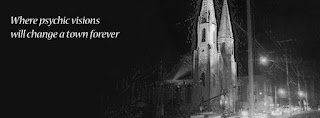Aside from its beautiful scenery and national park, Bariloche is famous for the chocolate-box architecture found in its town center, the Civic Center. Any visitor who has been to Switzerland will immediately be reminded of its pretty Alpine houses when they walk through the town. Log and stone buildings are home to souvenir shops, exclusive boutiques, and outdoor activity stores catering to Bariloche’s main tourist demographic. The center is small enough for a pleasant stroll, and is full of restaurants and cafés. The highlight is the cathedral, with its grand stone walls in a prime position, looming over the lake.
 |
| Bariloche Downtown facing Lake Nahuel Huapi |
Close to Bariloche is the small town of El Bolsón, to which it is possible to take a day trip (about two hours by car from Bariloche). Its first non-native inhabitants came from Germany, and consequently it has become famous for its production of cheeses and beer. It prides itself on its focus on ecological living and organic farming, and is therefore a popular destination for the liberal-minded. Likewise, there is a number of hiking routes nearby, of which one of the most popular is up to Cajón de Azul (Blue Canyon), a small vibrant blue lake where it is possible to swim. Further out from the city of Bariloche itself is the Lanín Volcano.
 |
| Blue Canyon near El Bolson |
 |
| Museum of the Patagonia |
Inside one of the Civic Center’s Swiss chalets you will find Bariloche’s Museum of the Patagonia. It contains an interesting collection of exhibits relating to the history of the national park and its surrounding area, specifically archaeological finds, natural history and indigenous artifacts. Most impressive is the Sala Pueblos Originarios, which examines the native people who lived around the area, notably the Mapuche people whose practices are still common today, just across the border in Chile. For a break from the outdoors, this museum provides plenty of information that visitors will find adds to their appreciation of Bariloche and what it has to offer.
 |
| Aerial View of Lanin Volcano |
In an attempt to match Bariloche’s famous Alpine architecture, there are numerous specialty chocolate shops in downtown for visitors to enjoy. Most of them are located on the main shopping street, Bartolomé Mitre Street, so they’re hard to avoid and resisting the temptation is worthless. The most popular shop with locals is Chocolates Rapa Nui, which has existed in the town for generations since it was first set up in the early 1900s by an Italian immigrant. The shop is also home to a café serving desserts and other patisserie items, as well as ice-cream. Other popular shops include Chocolates del Turista (mainly due to their free samples), Mamuschka and Bonifacio.
Tronador Hill in Nahuel Huapi National Park is the highest mountain in the lake region of Argentina. At the foot of the mountain visitors can see glaciers, which can be heard creaking – especially when huge chunks of ice drop off. It has three distinct peaks, called Argentino, Internacional, and Chileno, so it is easy to identify. Tronador Hill is an extinct volcano, and the surrounding area encompasses several small lakes and green forests to be explored. The Manso River, which visitors will pass when traveling to Tronador Hill from Bariloche, is a popular spot for white-water rafting. It is only a couple of hours away from Bariloche, and most hotels offer day tours.
 |
| Catedral Hill in Winter (June to September) |
Within the Nahuel Huapi National Park is Isla Victoria, a small rugged island on Lake Hahuel Nuapi reachable by a short boat journey. The island is approximately 31 km² in area, but only about a third of it is possible to walk around due to the difficult terrain. In the past it was inhabited by indigenous people, the evidence of which can be seen in cave drawings scattered across the island. It is a lovely spot for a tranquil walk through its forests, as it is home to a great variety of flora and fauna. The trails are also on boardwalks so it is not too strenuous, and perfect for families.
This activity is not possible all year round, but is certainly worth it when the snow is still on the ground. Catedral Hill is the most popular ski destination in the Bariloche area, and you can visit it with a short bus ride from downtown. A typical ski resort, among its stand-out feature are the views of the Nahuel Huapi lake and surrounding national park. The staff at the ski center on Catedral Hill come mostly from Bariloche and surroundings, for they have good knowledge of the mountain, its preservation and how to ski responsibly.
|
|



No comments:
Post a Comment